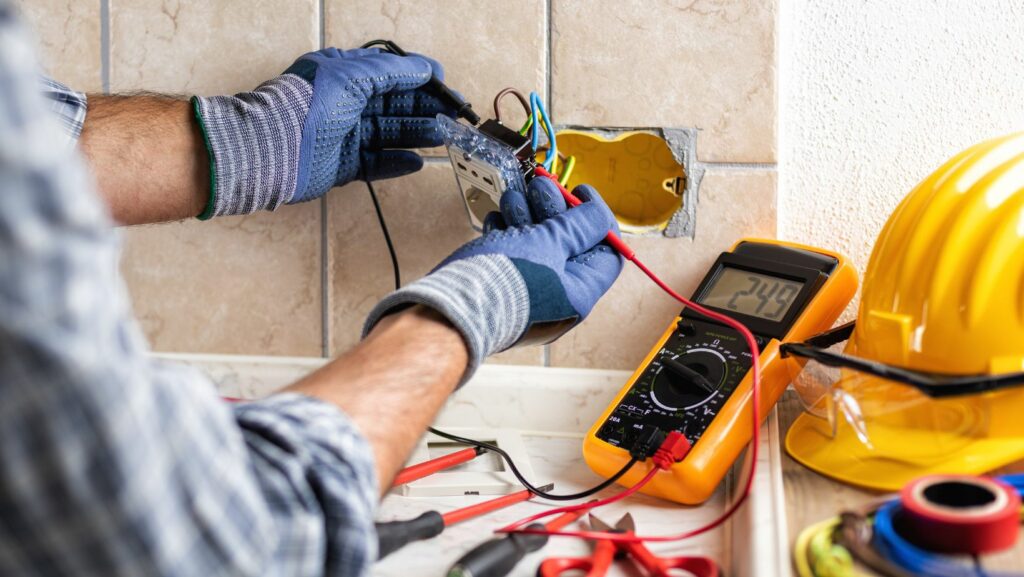
Electricity powers our homes but can pose serious risks if handled improperly. As a homeowner, it’s crucial to understand some basic electrical safety tips to keep your family and property safe. Whether dealing with minor repairs or just maintaining your electrical systems, knowing what to look for can make all the difference.
Understand Your Home’s Electrical System
Knowing your home’s electrical system helps with maintenance and safety. My first time dealing with a circuit breaker was nerve-wracking but eventually rewarding because it resolved an issue causing frequent outages.
Key Components
- Circuit Breaker: Protects against overloads.
- Electrical Panel: Distributes power.
- Outlets and Switches: Control and provide power.
- Wiring: Channels electricity.
Maintenance Tips
- Regular Inspections: Check outlets and breakers.
- Label the Electrical Panel: Helps during emergencies.
- Use Proper Wattage: Prevents overheating.
- Power Off: Turn off power before repairs.
- Use Insulated Tools: Reduces shock risk.
- Avoid Overloading Circuits: Prevents fire hazards.
These steps simplify managing electrical safety at home.
Regularly Inspect Electrical Cords and Outlets
Regular inspections prevent electrical hazards. I found a frayed cord behind my fridge, which could’ve easily started a fire. Check cords for cracks or wear. Outlets should be cool to touch and firmly hold plugs. If outlets spark or hum, call an electrician quickly. Keep all cords away from heat sources and sharp objects. Regularly inspecting cords and outlets ensures your electrical safety at home.
Use Appliances Wisely
Using appliances properly boosts electrical safety at home. Once, I noticed a burning smell from my microwave, so I unplugged it immediately. It turned out that it was overheating due to being too close to the wall.
Follow these tips:
- Read Manuals: Follow manufacturers’ instructions for safe operation.
- Avoid Overloading: Don’t plug multiple appliances into one outlet.
- Check Cords: Look for frayed or damaged cords; replace them if needed.
- Dry Hands: Always have dry hands when handling electrical appliances.
- Regular Inspections: Check appliances regularly to confirm they function correctly.
These simple steps help prevent accidents and keep your home safe.
Keep Water Away From Electrical Devices
Electrical safety involves knowing where to place appliances. Keep water sources like sinks and bathtubs away from devices. Once, while cleaning, I accidentally knocked a glass of water onto a plugged-in radio. It shorted out immediately, creating sparks. To avoid such risks:
- Place devices far from water sources (e.g., sinks).
- Never use wet hands to plug in or unplug devices.
- Fix leaks promptly near any electrical outlets.
Simple precautions protect you and your loved ones from potential hazards.
Childproof Electrical Outlets
Childproofing outlets enhance home electrical safety. I remember installing outlet covers when my toddler started crawling. Simple plastic covers worked at first, but he figured them out quickly.

For better protection, consider these options:
- Tamper-resistant receptacles (TRRs): These outlets have built-in shutters to block foreign objects. Easy and effective.
- Outlet plates with sliding covers: These are more secure than plastic caps and automatically cover the outlet when not in use.
- Box covers for unused outlets: Prevents any object insertion and keeps outlets clean.
Regularly check all electrical outlets and ensure they remain secure.
Install Ground Fault Circuit Interrupters (GFCIs)
Installing Ground Fault Circuit Interrupters (GFCIs) boosts electrical safety for homeowners by protecting them against electrical shocks. When I first moved into my home, I installed GFCIs in the kitchen and bathrooms. These devices shut off power if they detect an imbalance between incoming and outgoing currents.
- Kitchens: Near sinks or countertops.
- Bathrooms: Near sinks, showers, or bathtubs.
- Outdoor Areas: Patios, decks, and pools.
- Basements: Especially in damp areas.
Consult an electrician if you need clarification on installing GFCIs.
Schedule Regular Electrical Inspections
Scheduling regular electrical inspections keeps homes safe. Once, I skipped an inspection, thinking it was unnecessary. A few months later, an overloaded circuit caused a minor fire. Thankfully, it was caught early, but I learned the hard way.
Benefits of Regular Inspections
- Identify Potential Hazards: Inspectors spot outdated wiring and faulty connections.
- Prevent Electrical Fires: Regular checks reduce the risk of unseen issues.
- Ensure Compliance: Keeps systems up to code, avoiding fines.
- Peace of Mind: Knowing the electrical system is safe provides comfort.
How Often to Schedule Inspections
| Inspection Criteria | Recommended Frequency |
| Older Homes (20+ Years) | Every 3-5 years |
| Newer Homes | Every ten years |
| After Major Renovations | Immediately after significant electrical work |
| Wiring Check | Ensures all connections are secure and up to code |
| Outlets and Switches | Identifies any wear and tear |
| Electrical Panel | Confirms it’s functioning correctly, labeling it for easy reference |
| Appliances | Verifies their safety |
Regular inspections are a crucial part of electrical safety. It’s as simple as scheduling with a qualified electrician, so potential risks are minimized.
Be Prepared for Electrical Emergencies
Electrical safety starts with preparation. Have a plan for emergencies to avoid potential hazards.
- Keep Emergency Contact Numbers Handy: Always have the number of a qualified electrician that is easily accessible.
- Install Smoke Alarms and Fire Extinguishers: Place smoke alarms in key areas and know how to use fire extinguishers.

- Unplug Devices During a Power Surge: Unplugging devices prevents damage during surges. I once saved my computer from frying this way.
- Know the Location of Your Electrical Panel: Familiarize yourself with your electrical panel to quickly shut off power if needed.
- Educate Your Family: Ensure everyone knows basic electrical safety protocols. Conduct regular drills to keep everyone on the same page.
Educate Your Household
I remember when my son tried to plug in a lamp with wet hands. Luckily, I caught him in time. It’s essential to educate everyone at home about electrical safety. Here are critical points to cover:
- Proper Handling of Electrical Devices: Show everyone how to plug and unplug appliances safely. Use dry hands and ensure the plug fits securely.
- Identifying Electrical Hazards: Teach family members to recognize frayed cords, exposed wires, and overloaded outlets.
- Emergency Procedures: Make sure everyone knows what to do in an electrical emergency, including where the electrical panel is located and how to switch off the main power.
- Safety Practices for Children: Explain to kids why it’s dangerous to insert objects into outlets. Use outlet covers to prevent accidents.
- GFCI Usage: Educate them about Ground Fault Circuit Interrupters (GFCIs) and their role in preventing electric shocks, especially in areas near water, like bathrooms and kitchens.
Covering these points fosters a safer home environment by making everyone aware of electrical risks and teaching them how to manage potential dangers.
Conclusion
Electrical safety in the home is crucial. I once dealt with a faulty extension cord that nearly sparked a fire. Since then, I’ve prioritized regular inspections and educating my family on proper electrical use. Always use GFCIs, handle extension cords carefully, and keep outdoor installations safe. Frequent checks and upgrades can prevent risks, making your home safer.










